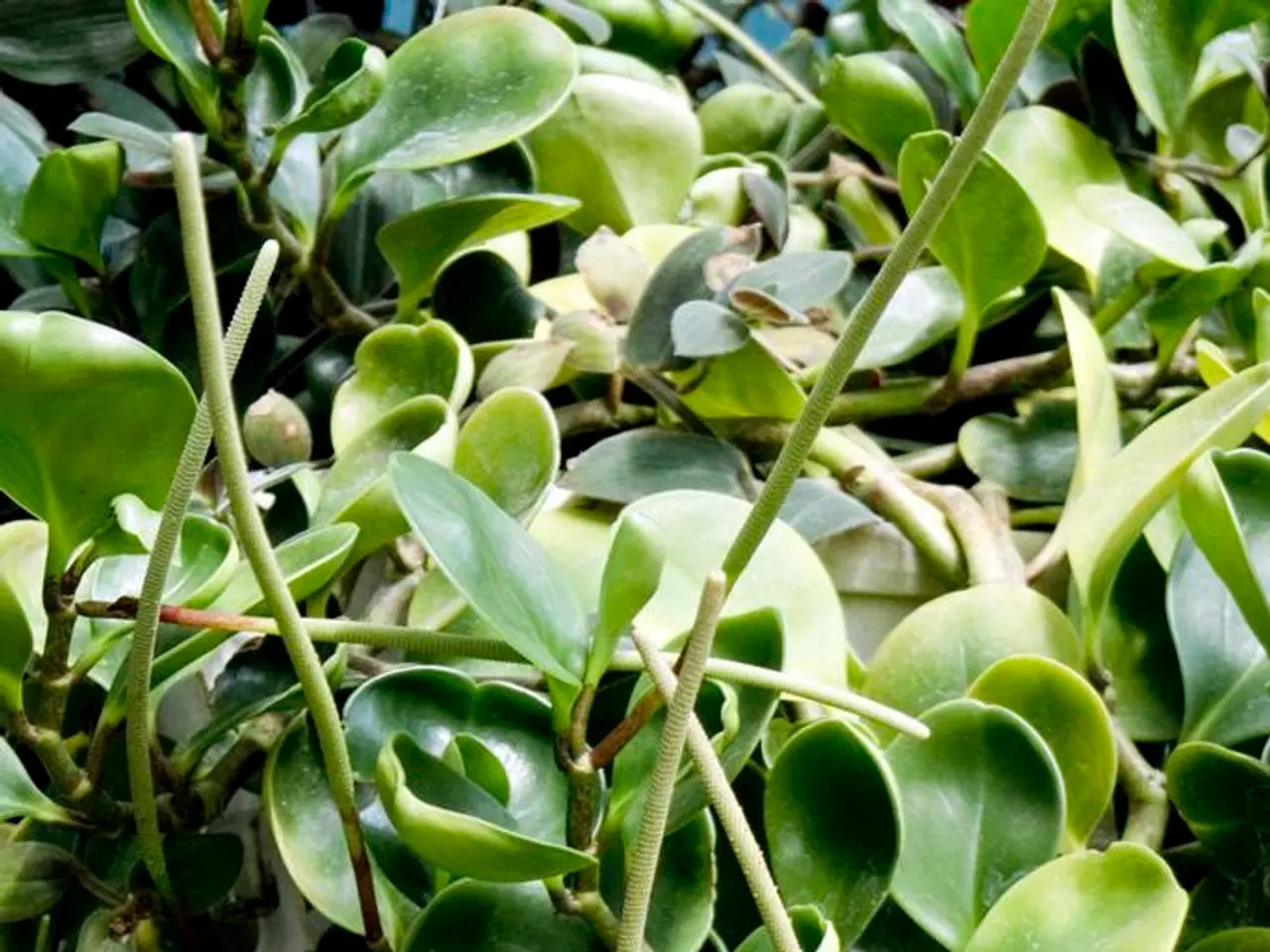Strategies for Eliminating Mold in Terrariums: 7 Effortless Solutions and Techniques
In the world of terrarium-keeping, mold can be a common issue that can affect the health of your plants and the overall aesthetics of your miniature ecosystem. Here are some effective strategies for preventing and treating mold in terrariums.
Prevention is key when it comes to mold control. Starting with clean, sterilized materials is crucial. This means boiling or baking the glass container, gravel, and soil components to eliminate mold spores and pathogens, reducing the chance of mold establishing itself [1][3].
Incorporating a drainage layer of small rocks or pebbles, topped with activated charcoal, helps purify water and absorb toxins, creating an environment less favorable to mold growth [1][3][4]. Sphagnum moss, placed as a barrier or mixed into the substrate, helps regulate moisture and acidity while acting as a natural antibacterial agent that reduces mold buildup and absorbs excess water [1][4][5].
Watering practices are critical. Overwatering creates humid conditions that encourage mold, so moisture should be carefully managed by misting properly and allowing good air circulation. Using a lid that helps control humidity while preventing excessive dampness also supports mold prevention [1][3][5].
If mold does appear, spraying the terrarium with hydrogen peroxide (commonly a 3% store-bought solution, or up to 10%) is an effective treatment as it kills mold spores without harming plants or soil health [6].
For larger tank-style pieces, incorporating fans and ventilation can promote natural air circulation that replicates a jungle environment, making sure mold isn't able to take hold [7].
In some cases, if the mold outbreak is localized to certain plants or hardscape elements, affected objects can be removed and quarantined elsewhere [2]. If all else fails, and the substrate is likely to be the cause, re-potting the whole terrarium in a sterile medium is a good Hail Mary option, though it means starting from scratch [2].
An interesting approach to mold prevention is the addition of springtail cultures. These beneficial terrarium insects eat mold and can be introduced as a deterrent and solution for mold problems [6]. Adding a springtail culture to your terrarium, even new and healthy ones, is a cheap and effective way to prevent mold and never have to deal with it [6].
In summary, the general approach is: sterilize materials before setup, maintain good drainage with a barrier layer, incorporate activated charcoal and sphagnum moss, avoid excessive moisture through careful watering and humidity control, and treat mold promptly with hydrogen peroxide if needed [1][3][4][5]. By following these strategies, you can ensure a healthy and thriving terrarium ecosystem.
References:
[1] Terrarium Tips: How to Prevent and Treat Mold. (2021). Terrarium Tips. https://www.terrariumpoint.com/terrarium-tips-how-to-prevent-and-treat-mold/
[2] How to Get Rid of Mold in a Terrarium. (2021). Gardening Know How. https://www.gardeningknowhow.com/garden-how-to/hp/how-to-get-rid-of-mold-in-a-terrarium.htm
[3] Mold in Your Terrarium: How to Identify and Prevent It. (2020). The Spruce. https://www.thespruce.com/mold-in-your-terrarium-how-to-identify-and-prevent-it-1413999
[4] Mold in a Terrarium - What to Do. (2020). The Terrarium Guide. https://theterrariumguide.com/mold-in-a-terrarium-what-to-do/
[5] Mold in a Terrarium: Causes, Symptoms, and Solutions. (2020). The Terrarium Source. https://www.theterrariumsources.com/mold-in-a-terrarium-causes-symptoms-and-solutions/
[6] Springtails in Terrariums: The Ultimate Guide. (2021). Terrarium Tips. https://www.terrariumpoint.com/springtails-in-terrariums-the-ultimate-guide/
[7] How to Prevent Mold in Terrariums. (2021). Gardening Channel. https://www.gardeningchannel.com/how-to-prevent-mold-in-terrariums/
To maintain a healthy home-and-garden lifestyle, start your terrarium setup by sterilizing materials such as the glass container, gravel, and soil components to eliminate mold spores and pathogens. Incorporating a drainage layer of small rocks or pebbles, activated charcoal, and sphagnum moss also helps create an environment less favorable to mold growth. For efficient mold control, regulate moisture through careful watering practices, using a lid to control humidity, and avoiding overwatering. If mold appears, treat it promptly with hydrogen peroxide, and consider adding springtail cultures for a natural mold deterrent.




